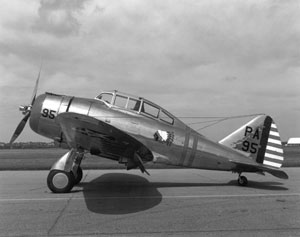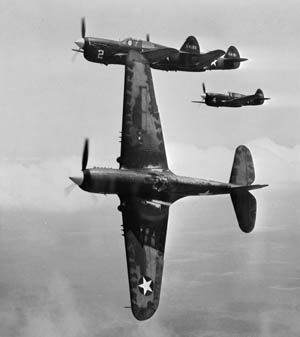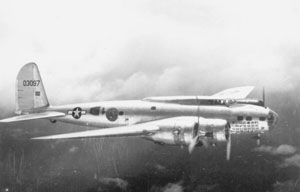Turn the Cup
Last week Lt. Col. Richard Cole, USAF-Ret., passed away on April 8. Col. Cole was the last surviving member of Doolittle’s Raiders at 103. During the mission he flew as copilot in the lead airplane.
One can only imagine what Cole felt during that mission, but try, if you will, for a moment, to put yourself in his place. It is the morning of April 18, 1942. America and its Allies are losing the war in the Pacific.
Pause and reflect on that. Seventy-seven years ago, this country was losing its war against Japan. Japan started the war with a surprise attack against the US Navy’s Pacific fleet at Pearl Harbor. The day before that attack, the overwhelming majority of people in the US were against any involvement in the war in Europe, or active involvement in the war between Japan and China. Afterward, on the morning of December 8, young American men lined up for blocks outside of recruiting offices to enlist and fight Japan.
Only America didn’t have a lot to fight with, and wouldn’t for months to come. Those young men lining up to enlist that Monday morning would learn close-order drill with obsolete Springfield rifles, at best, and at worst, they’d drill with broomsticks as their fathers did in World War One. On that morning, America’s air forces had only a handful of heavy bombers to carry the war to the enemy, nearly all of them obsolete or obsolescent. The fighters that would clear the skies of Axis aircraft were still in their test phase. Medium bombers like the B-25 and the B-26 were only beginning to come off the assembly line.
The oceans protecting America from attack also prevented us from easily reaching our enemies in Europe and Asia.
But we could put sixteen B-25 medium bombers on the deck of an aircraft carrier, something neither bomber nor carrier had been designed for, and send that aircraft carrier close enough to Japan so that those medium bombers would have the range to attack Japan and fly to airfields in China. That was the plan. It gave the bomber crews at least a chance of survival.
In the event the task force sent to attack Japan was dis covered by a Japanese picket boat who radioed the news of their presence before being sunk.
Doolittle and his men had the range to strike Japan. They didn’t have the range to reach the Chinese airfields where they might reasonably hope to land, and live to fight another day. At best, they could reach the Chinese coast, most of which was occupied by the Japanese, where the odds of capture were very high. To attack Japan now meant the odds of surviving the mission were very small indeed.
It was already a volunteer mission, but the discovery of the task force well east of their planned launch point changed everything. Doolittle again asked for volunteers. He got them. All of them volunteered to go, knowing the odds against survival, already bad, were now much worse. It hadn’t become a suicide mission, but it was close.
I suspect, sitting in the cockpit of Doolittle’s B-25, looking at a very, very short stretch of flight deck, pitching up and down in the heavy sea running at the time, Richard Cole was afraid. I suspect he wasn’t alone. But I’m also certain he focused on his job, which was to help Jimmy Doolittle get their B-25 off the deck of the USS Hornet. I know that, because every B-25 got off the deck of the Hornetand attacked Japan.
That moment in history, along with many others in those first grim months of the war that put America’s back to the wall, should have served as a warning to the dictatorships of Japan and Germany that democracy does not produce weaklings or cowards. Democracy produces men and women whose stake in their country is far greater, even immeasurably greater, than those who serve the whim of a single person. To die for the Emperor, or der Fuehrer, is to die for a man, however vainglorious the trappings of office. To risk your life for America is to put your life on the line for every single one of your compatriots, for all Americans, that the idea of America may survive. Not for a man. For the ideal.
I believe everyone on that mission understood that ideal. And now the last living link to that moment, that mission, is severed. But their willingness to risk that sacrifice, in that mission, in that moment, meant the survival of the ideal that is most truly America.
The damage done to Japan by the bombs of Doolittle’s Raiders was relatively insignificant. Japan itself barely noted the raid.
Imagine the effect, though, upon discouraged Americans, bludgeoned by one defeat after another, with the forces of the Axis seemingly unstoppable and triumphant, when banner headlines carried the news: TOKYO BOMBED!
The exaltation of a moment when hope is renewed, when faith is renewed, when belief is renewed, is something we should seek to understand and always remember. It shouldn’t be moments in a war, not alone. When justice prevails in this country, when freedom is renewed and strengthened for every American, when the future becomes brighter and more accessible to all, those are the moments when the ideal of America is clarified. And those are the moment from which we draw the courage to look down a heaving flight deck and fling ourselves into the unknown to keep that idea, that ideal, alive.
In an earlier post I wrote about Richard Cole and the cups the Doolittle Raiders drank from at their reunions. One by one, as the survivors of the mission and the war passed away, those cups were turned over. Now the last cup is turned, and the last living link to what it was like to fly off a carrier deck and bomb Japan, in what, truthfully, was no more than the sort of gesture that tells an enemy the fight isn’t over, that link is dissolved.
Now all we have is history too easily forgotten. For the last cup, the last living link, is turned over. Now we must all remember the meaning behind those cups.
For those of us who remember, though, thank you, Col. Cole. Thank you for drinking from the cup. Thank you, and all who were with you, for your part in America.


